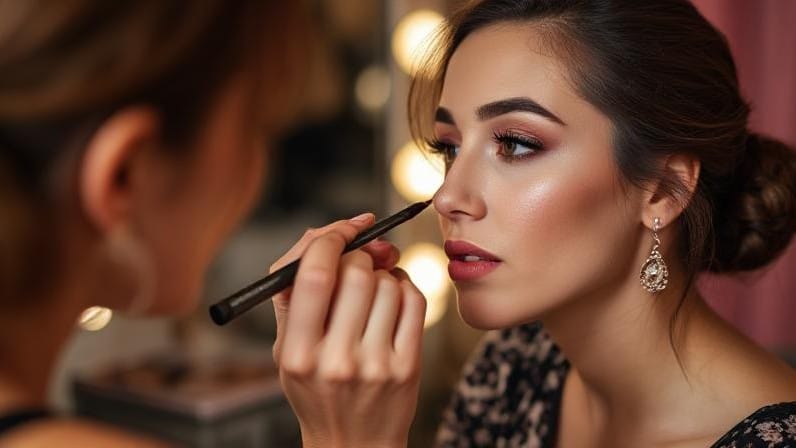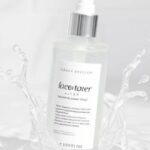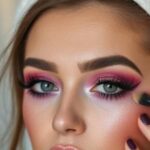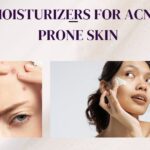Ideal skin with no breakouts: Your ultimate guide to acne-safe makeup
Acne is bad enough, but it can be made worse when makeup aggravates your skin issues. The silver lining? You can have both clear skin and full coverage. The key is choosing the right acne-safe makeup products and knowing how to use them so that you can wear makeup without worrying that your pores will clog or that you’ll have an acne flare.
This is your ultimate acne-safe makeup guide, a complete framework to help you achieve a healthy glow, without compromising your skin’s health!
What Is Acne-Safe Makeup?
Acne-safe makeup products are formulated without ingredients that cause pore clogging and irritation to the skin. These products may be:
Non-comedogenic (do not clog your pores)
Fragrance-free or low fragrance
Oil-free or light oils
Taken with added skin-soothing or acne-fighting ingredients
It’s important to note that just because a product is considered “non-comedogenic”, it does not mean it is acne-safe. Because of this, we will break down what to look for, what to avoid, and what to put on in order to keep the breakouts at bay while feeling beautiful.
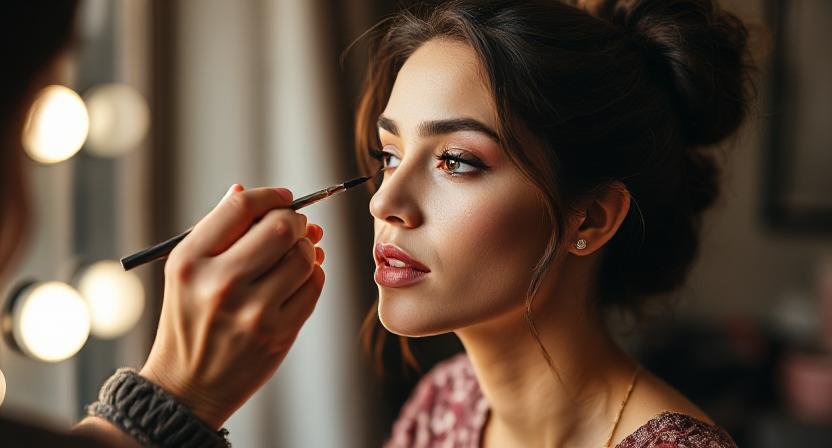
Common ingredients to avoid in makeup that are problematic for acne-prone skin
Whether you’ve splurged on the expensive stuff or gone with your dermatologist’s recommendation, you will still want to check the label when it comes to pore-clogging ingredients. Here are common culprits that aggravate acne:
Ingredients : Why to Avoid
Isopropyl Myristate Comedogenic, will clog pores instantly
Unfractionated Coconut Oil : Heavy oils that will lock in bacteria
Lanolin from sheep wool may irritate or seriously clog
Alcohol Denat will dry out the skin, making it less oily
Fragrance/Parfum Causes inflammation or allergic reactions
Instead choose:
Niacinamide (soothing and helps reduce redness)
Zinc oxide (anti-inflammatory)
Salicylic acid (cleanses clogged pores)
Hyaluronic acid (adds hydration without clogging)
1. Cleanse and Prep Your Skin
Before applying makeup, double cleanse your face:
Use a gentle oil cleanser to remove excess oil and sunscreen.
Then wash off with a salicylic acid or benzoyl peroxide cleanser. These will target the acne-causing bacteria.
Next:
Use a lightweight moisturizer with niacinamide or ceramides.
Use a non-comedogenic broad-spectrum sunscreen. I recommend:
EltaMD UV Clear
Neutrogena Hydro Boost SPF 50
Tip: Allow the sunscreen and moisturizer to completely absorb (5 to 10 minutes) before applying any makeup.
2. Primer: Your First Line of Defense
A primer will create a barrier/ barrier between your skin and the makeup, while also offering additional skin benefits.
Best Acne-Safe Primers:
Tatcha The Silk Canvas – Offers silk extracts to blur pores and is also non-comedogenic.
e.l.f. Acne Fighting Putty Primer – Contains 1.8% salicylic acid.
Smashbox Photo Finish Control Mattifying Primer – Reduces oil and redness from irritating anti-acne products.
Use a mattifying primer if your skin is oily, and a hydrating primer if you’re on acne medications that dry your skin.
Foundation: Lightweight & Buildable
It is in the foundation category of makeup where the most trouble for acne-prone users occurs. Stay away from thick, full-coverage formulas, unless this is explicitly indicated for use on acne-prone skin.
Top Foundations Safe for Acne:
Product Benefits
ILIA Super Serum Skin Tint SPF 40 Non-comedogenic, hydrating, and natural coverage
Neutrogena SkinClearing Oil-Free Makeup contains salicylic acid to treat acne
Oxygenetix Oxygenating Foundation Medical-grade formula for use on post-treatment skin
bareMinerals Original Loose Powder Foundation, Talc-free, buildable mineral base
Tips:
Use a damp beauty sponge to apply; it is less rough on people with acne-prone skin.
Use a brush or applicator, rather than your fingers, as fingers tend to spread bacteria.
4. Concealer: Spot Correct Like a Boss
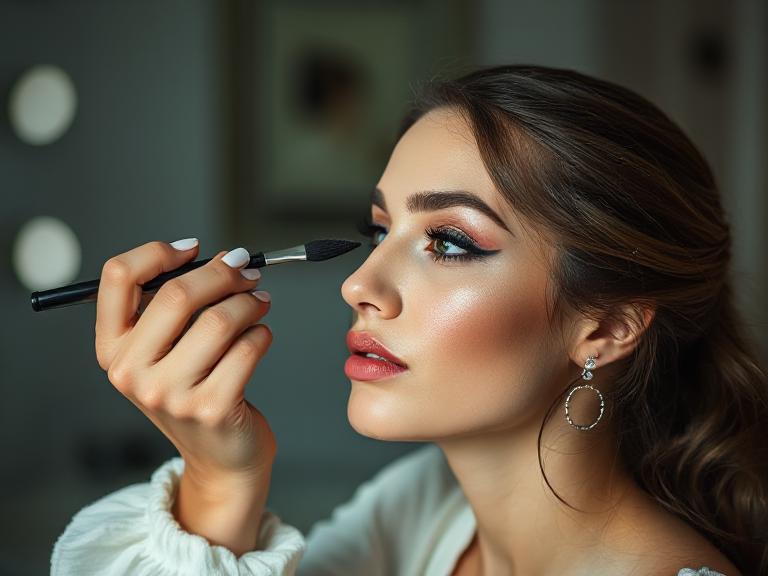
Choose a lightweight, non-comedogenic concealer with healing properties.
Best Acne-Safe Concealers:
NARS Soft Matte Complete Concealer
Maybelline Fit Me Concealer (oil-free)
RMS Beauty “Un” Cover-Up Concealer
Apply to spots only where necessary and limit products that are layered.
5. Setting Powder: Lock It In, Lightly
If you are acne-prone with oily skin, be prepared for your makeup to wear off quickly. Use a non-comedogenic setting powder to absorb oil and set your look.
Some Top Picks:
Laura Mercier Translucent Loose Setting Powder (Talc-free version)
COVERFX Perfect Setting Powder
Alima Pure Satin Matte Powder Foundation
Keep in mind to avoid extremely heavy baking, as it may dry out your skin or irritate your skin.
6. Blush, Bronzer & Highlighter: Go Clean
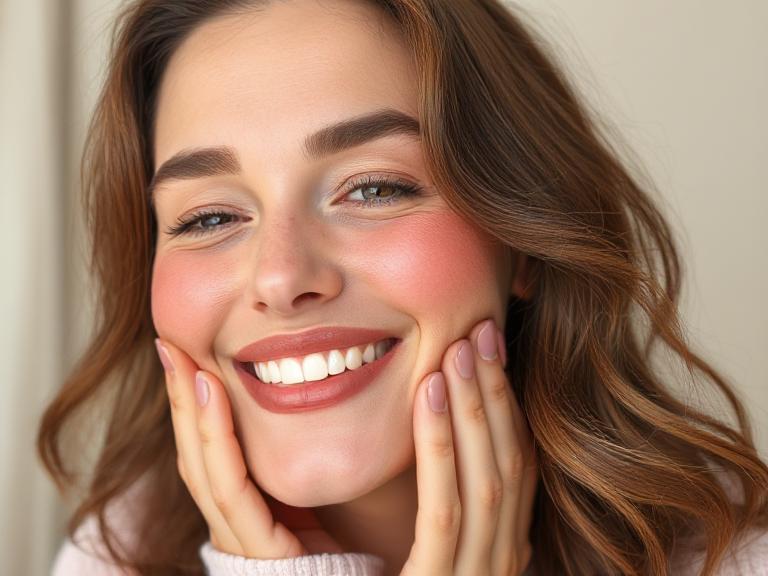
Powders are better than creams for acne-prone skin, so stick with minerals when possible and avoid overly shimmery products if you have texture.
Acne-safe colour picks:
Blush: bareMinerals Gen Nude Blush or Physicians Formula Powder Palette Blush
Bronzer: Lily Lolo Pressed Bronzer
Highlighter: RMS Beauty Living Luminizer (non-comedogenic cream formula)
7. Setting Spray: Seal, not suffocate
A good lightweight setting spray will provide longevity without clogging pores.
Best Setting Sprays:
Urban Decay All Nighter (Oil-Free)
NYX Matte Finish Setting Spray
Tower 28 SOS Daily Rescue Spray – also doubles as a facial mist and breakout soother.
The Right Way to Remove Acne-Safe Makeup
Removing makeup is equally important as applying it. Leftover residue just means more breakouts.
Night Routine:
Use a non-comedogenic cleansing balm or oil, and keep this list handy:
DHC Deep Cleansing Oil
JUNO & Co Clean 10 Cleansing Balm
Wash away with a gentle, water-based cleanser.
Proceed with the exfoliating toner (2–3 times per week), carrying either salicylic or glycolic acid for a pore-clearing effect.
Double up with a water-light moisturizer and an acne treatment if preferred (adapalene or benzoyl peroxide work).
Weekly Maintenance: Detox and Deep Clean
To maintain calm skin and clean instruments:
Clean your brushes and sponges weekly. Use a gentle soap or baby shampoo.
Clay mask twice a week to detox (bentonite or kaolin type).
Do not fall asleep with makeup on-even if “acne-safe.”
Common Errors That Lead to Breakouts (Even with Acne-Safe Makeup)
Skipping your sunscreen: UV exposure worsens acne and dark spots.
Expired products: Worse than useless, they harbor bacteria.
On active acne: Nothing goes on active lesions; let them air heal.
Touching while applying: Wash your hands, and avoid touching during application.
Layering too many products: Maintain your base light and breathable.
Create Acne-Safe Makeup for Special Skin Types
For Oily and Acne-Prone Skin: Opt for makeup products that contain matte finishes and oil-absorbing properties.
Powder blush and bronzer work better than creams.
Keep blotting papers nearby at all times.
For Dry and Acne-Prone Skin: Try to find foundation products that provide hydration through serum-like textures.
Apply cream blushes together with highlighters.
Avoid using setting sprays that contain strong alcohol content.
For Sensitive and Acne-Prone Skin: Avoid using products that contain fragrances or essential oils.
Choose products that contain few ingredients.
Before applying the entire product test it on a small area of your skin.
Dermatologist Insight
The wrong makeup products can worsen acne symptoms even though makeup itself does not trigger breakouts. The essential steps include caring for your skin barrier and selecting non-comedogenic makeup while maintaining proper cleaning of your beauty tools.
An Acne-Safe Makeup Starter Kit to Have in 2025. Starting acne-safe makeup requires these tested and proven products as your initial selection:
Final Thoughts:
Makeup That Is Backing Up Your Skin
Clear skin and glam makeup aren’t very compatible. Once you understand your skin and choose the right acne-secure makeup, you can spend your days getting flawless looks without that after-/post-makeup regret.
FAQs
Q1: Can makeup cause acne?
Yes, especially if they happen to be comedogenic, have expired, and are not removed properly.
Q2: Is mineral makeup good for acne-prone skin?
Yes, especially when they are talc-free and come with zinc oxide or titanium dioxide.
Q3: How often should I clean my makeup brushes?
Once a week at least—more if one is prone to breakouts.
Q4: Can I wear foundation if I have active acne?
Yes, you can wear foundation if you have active acne. Just make sure to keep the coverage as light and breathable as possible, avoiding application on cystic areas.
Q5: What is the #1 makeup product not to skip?
Sunscreen—particularly one that is non-comedogenic, such as EltaMD or La Roche-Posay.
